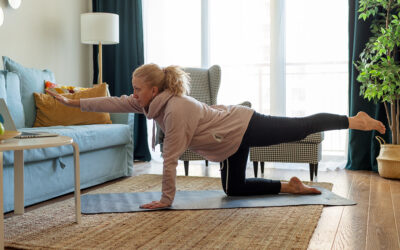Health Topics
Why You Should Do Tabata Training
Developed by Izumi Tabata, Ph.D., at the National Institute of Fitness and Sports in Tokyo, Tabata is based on timed interval method. Tabata is a type of HIIT workout that aims to yield the most benefits in a short amount of time. For each exercise, you do eight...
Upper Back
The muscles in the group are: TRAPEZIUS This is broad, flat and triangular in shape. It is responsible for elevating and retracting the scapula (shoulder blade) and when the arm abducts (moves away from the body’s centre line), it rotates the scapula. LATISSIMUS DORSI...
Why You Should Do Giant Sets Training
Giant sets are doing 4 or more exercises back-to-back with no break. During these sets you can either pair exercises that are non-competing, in other words opposing muscle groups, or you can target the same muscle. For example, you might do an overhead press, a...
Why You Should Do Fartlek Training
Fartlek is a Swedish word and roughly translated means ‘speed play’. Fartlek training involves varying the intensity or speed of your run to improve your fitness and endurance. Fartlek sessions are usually performed for a minimum of 45 minutes and intensity can vary...
Lower Back
There are three different groups of muscles that help the spine to function. These are: Extensors – these enable standing and lifting (such as the Erector Spinae). Flexors – these allow flexion, bending forward, lifting and arching of the lower back. Obliques – these...
Why You Should Do Drop Set Training
A drop set is an advanced resistance training technique in which you focus on completing a set until failure — or the inability to do another repetition. Then, you lighten the load by 10–30%, and repeat, with little to no rest in between sets. WHAT ARE THE BENEFITS?...
Why You Should Do Interval Training
It’s not as complicated as you might think. Interval training is simply alternating short bursts (example 30 seconds) of intense activity with longer intervals (example 1 to 2 minutes) of less intense activity. Whether you’re a novice exerciser or you’ve been...
Abdominals
RECTUS ABDOMINIS This is your “6-pack” muscle. This muscle is essential for maintaining good posture and is primarily responsible for flexing the lumbar spine. It also helps to regulate your breathing and plays a vital role in protecting your internal organs by...
Strength Training: 7s/21s
This is an advanced method of training that the working muscle group in three different ranges of motion within a single set. Its name from the total number of reps per set you form with this training technique in each set, you do a total of 21 repetitions but as...
Low Intensity Steady State Training
Low-intensity steady-state, or LISS, is a method of cardiovascular exercise in which you do aerobic activity at a low-to-moderate intensity for a continuous, and often extended, period. “LISS” is a newer term used to describe a low-intensity style of training, but...










